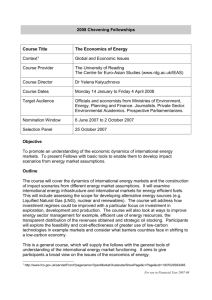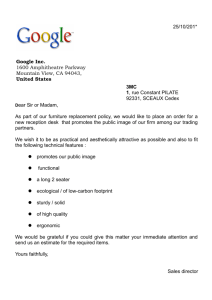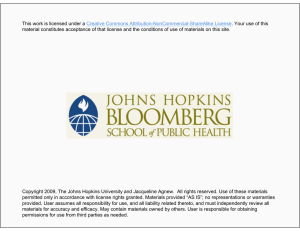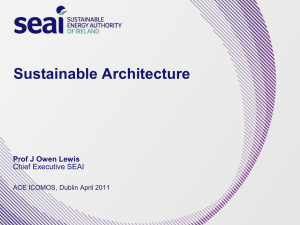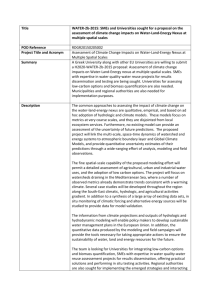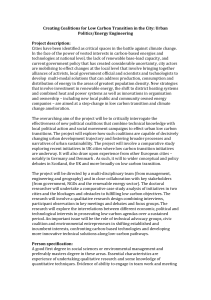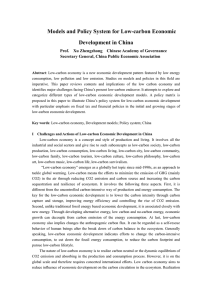Low-carbon Strategy in China: from the low- Financial and Tax Polices
advertisement
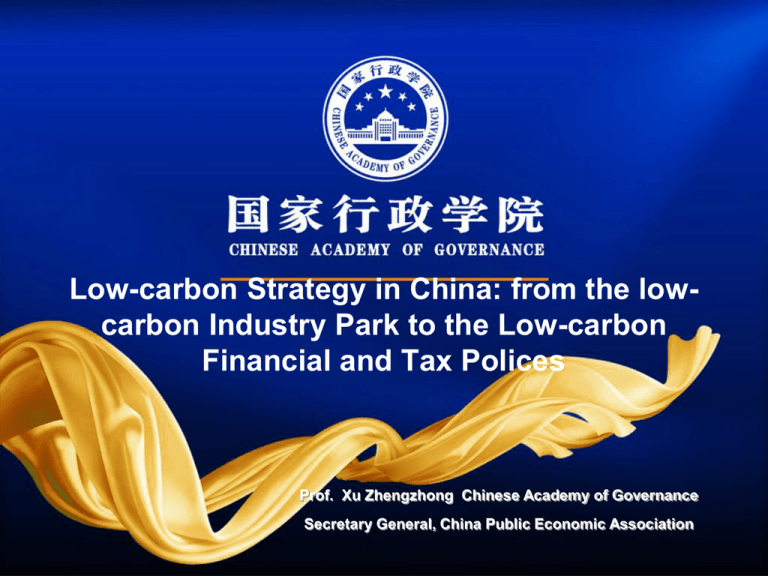
Low-carbon Strategy in China: from the lowcarbon Industry Park to the Low-carbon Financial and Tax Polices Prof. Xu Zhengzhong Chinese Academy of Governance Secretary General, China Public Economic Association Low-carbon Development Models based on Different Driving Forces in China Technology-led model T (Model T). Project-led mode1 P (Model P).. Enterprise-led models (Model E). Non-governmental organizations-led model (Model N) Capital-driven model (model CT) Consume-guide model (Model CG) Government-driven model (Model G) Legally-bound model (Model L) Low-carbon Economy Models Based on Different Targets low-carbon city model, low-carbon industry model carbon sequestration model. Low-carbon Economic System Eco-system Waste gas Waste gas Economic system Electricity Heating Recycle d water Waste residue Sewage Treatment Heat MELICSEA Thermal power stations Electricit y Domestic water Waste Water Ash Inflammable Waste Gangue Fly Ash Aeolian Low-carbon Economic Development Strategies Low-carbon System Energy Policy New energy Energy structure High energy efficiency Energy conservation and Emission reduction Low carbon energy Industry Policy Emerging Industry Industry structure Low-carbon agriculture Low-carbon industry policy Low-carbon service industry Policy Core Low-carbon Culture Market Policy Market access Carbon exchange Low-carbon tax and finance Ecocompensation Eco-financial Policy Low-carbon price Consump tion Policy Horizontal Policy Chain Technolo gy Policy Consumption Guidance Consumption environment Consumption Demand Green Consumption Low-carbon lifestyle Tax and fiscal policies provide the starting power Financial innovation provides continuous momentum Policy Base Basic Manage ment Policy New energy Technology Energy conservation and emission reduction Carbon absorption Technical cooperation Technical Standard Energy Contract Low-carbon evaluation Low-carbon incentives Low-carbon control Low-carbon pilot Horizontal Implementing Policy Chain Construction of Low-Carbon Economic Policy Chain Tax Category Adjustment Resource tax (1)Enlarge taxation scope to cover to resources, such as land, sea, forest, geothermal resource, etc. (2)Appropriately Increase tax rates of some resource taxes, especially for these that are under key protection and are prohibited in exploitation. (3)Adjust current tax base. Eg. Output-based assessment should be replaced by recoverable reserves to encourage resource recovering. Consumption tax (1)Enlarge taxation scope to cover products that are with high energy consumption and high carbon emissions and fail to meet energy conservation standards. (2)Develop differentiated tax rate. Tax rate should be based on energy consumption and carbon emission. Current tax level of some consumer goods need to be adjusted, Eg increase the tax rate of high-emission cars, while lower that of low-emission cars and motorcycles (3)Consider collecting oil consumption tax to improve public awareness on energy serving and environmental protection. Value-added tax(VAT) (1)Offer VAT deduction to key energy-saving equipment and products to remove their price constraints within a given period of time. (2)Remove tax reduction on toxic pesticide and agricultural plastic film. business tax (1) Exempt business tax of institutes, organizations and individuals that get incomes from technical transfer, consultation, and service in energy-saving, emission reduction, renewable energies R&D to encourage the dissemination and utilization of energy-saving technologies. income tax (1) Increase the pre-tax deduction rate of R&D funds for energy-saving equipment and products (2) Apply the accelerated depreciation to some special equipment for producing energy-saving products. (3) Deduct or exempt income taxes of enterprises that purchased and installed equipment for producing energy saving products. (4)Exempt or reduce income tax of institutes and individuals who receive income from low-carbon oriented technical services including technical transfer, training, consultation, service, and outsourcing. tax on buying vehicles (1) Give appropriate tax preference to clean energy or new energy vehicles. vehicle and vessel tax (1) Adjust the base of vehicle and vessel tax. There should be different threshold for vehicle and vessels with different energy consumption levels and gas emission. tariff (1)Impose tariff or environmental tariff on imported equipment with high energy consumption and carbon emission. (2) Impose tariff or environmental tariff on primary or semi-manufactured goods which consume large amount of domestic natural resources and cause little or no pollution in the destination countries. 谢谢大家! Thanks 许正中 13910422876 010-68929044(办) Xu_zhengzhong@163.com
